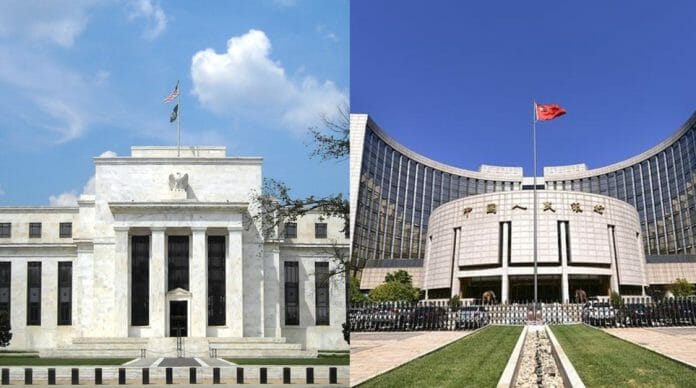The diverging policy outlook between the US and China is creating opportunities for investors. The Fed is likely to pause, but not cut rates yet given the tightest job market in 50 years and still elevated, albeit moderating, inflation. Add to this tightening US lending conditions, ongoing stress among regional banks, and the non-negligible risk of a technical default. Meanwhile, China’s low inflation means policymakers are likely to continue to stimulate domestic consumption and revive private investment. Given this divergent backdrop, we believe US risk assets are under-pricing risk, while China and Asia-ex-Japan equities and Asia USD bonds are undervalued.
US inflation, job market and bank lending standards: US inflation continued to slow in April, building the case for a Fed rate pause. The continued slowdown in core services inflation ex-shelter, Fed Chair Powell’s preferred measure to gauge underlying wage pressures, argues for a pause. Nevertheless, with the US job market still tight, the Fed would be reluctant to cut rates just yet, at least until it sees clear signs of a sharp deterioration in the job market. The latest quarterly Senior Loan Officers’ Survey showed a further tightening of bank lending conditions and slowing loan demand. This is likely to weigh on economic growth, corporate earnings, and the job market, likely causing a recession in H2 or early next year. In that event, risk assets, including US equities and high-yield bonds, are likely to underperform high-quality bonds.
US debt ceiling: There was not much progress on raising the US debt ceiling to avoid a US government default as early as June. President Biden and House Speaker McCarthy are due to meet again on this issue. In our base case, the two sides will agree on separating the debt ceiling issue with budget spending cuts, kicking the can down the road yet again. This plan would entail raising the debt ceiling enough for the government to meet its expenses, say until the end of this year. That would leave the two sides to wrangle over spending cuts at the annual round of budget talks in Q3 (the US fiscal year starts in October). Such a plan would lower the near-term risk of a US default but would raise the likelihood
of large-scale budget cuts later this year. There is of course the tail risk of a small caucus of Republican Congressman shooting down any deal. In the extreme case, President Biden hinted at the “nuclear option” of using the 14th Amendment (which says the validity of US public debt “shall not be questioned”) to raise the debt ceiling, opening himself up for litigation.
China’s May Day holiday bounce: China’s May Day “golden week” data confirm our view that consumption is recovering strongly. Single-day rail ticket sales, the number of trains operating, and tourist site ticket sales all rose to record highs. Almost 20% more people travelled during the five-day holiday than in the pre-pandemic year’s May Day holidays. However, per-traveller consumption was lower than in 2019. The good news is the leadership recognises the challenges in sustaining the recovery in domestic private demand. The Politburo’s statement after its meeting on 28 April was pro-growth. We expect more targeted measures to boost sentiment and youth employment and revive private-sector business confidence.
Investment implications: The evolving landscape argues for an overall defensive position in foundation allocations, at least until there are clear indications the Fed is ready to ease policy. Over the next few months, history shows the best way to position for US debt ceiling risk is to be Underweight stocks and short-term T-bills and Overweight medium-to-long-term bonds, gold, and safe-haven currencies such as JPY and CHF.
We see attractive value in Asia USD bonds and Asia ex-Japan and China equities, especially in China’s growth sectors, such as technology, communications services, and consumer discretionary. China assets have underperformed YTD likely due to geopolitical concerns. We see rising policy support and improving fundamentals leading to outperformance in H2.
By Rajat Bhattacharya- Standard Chartered









